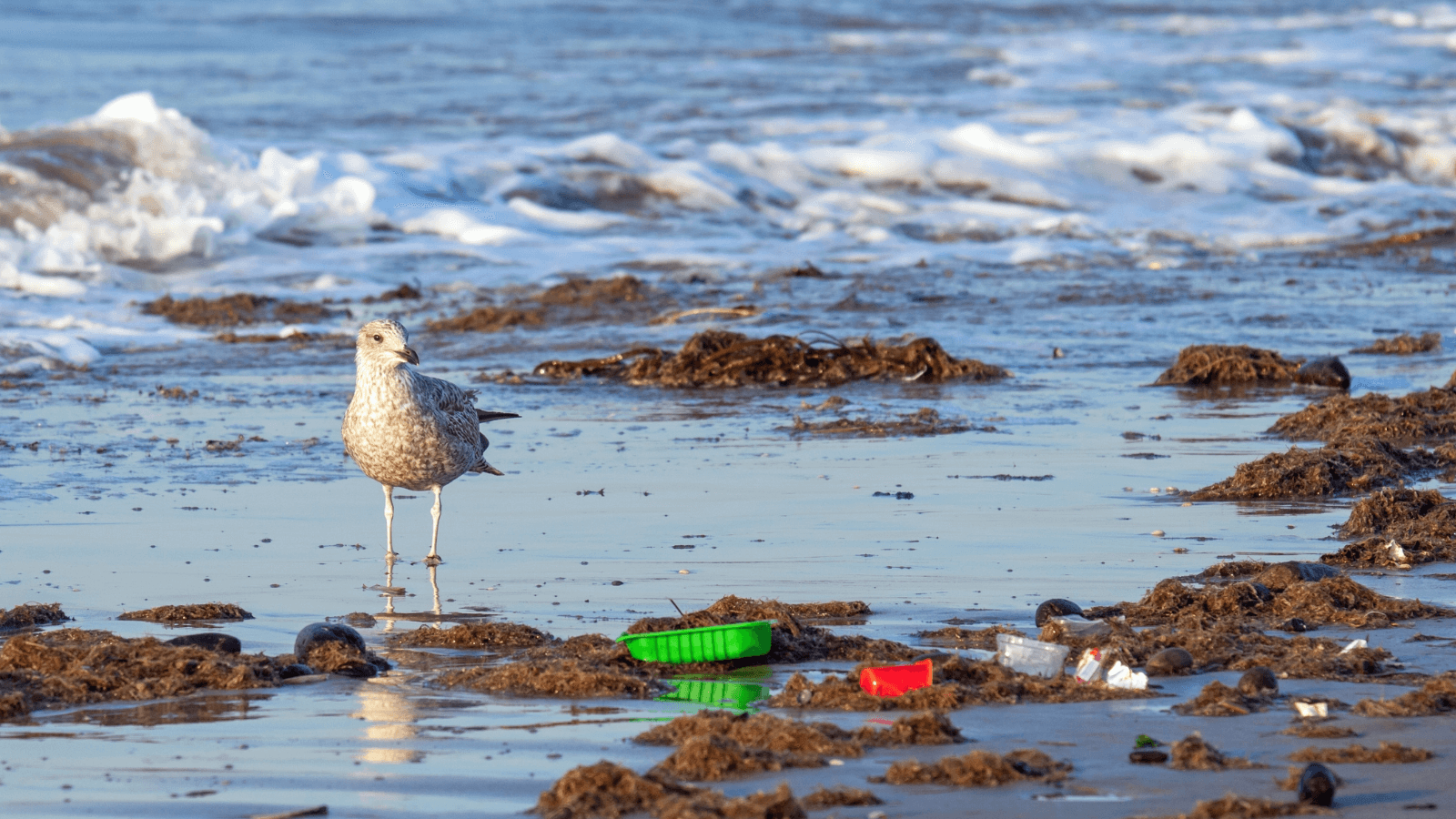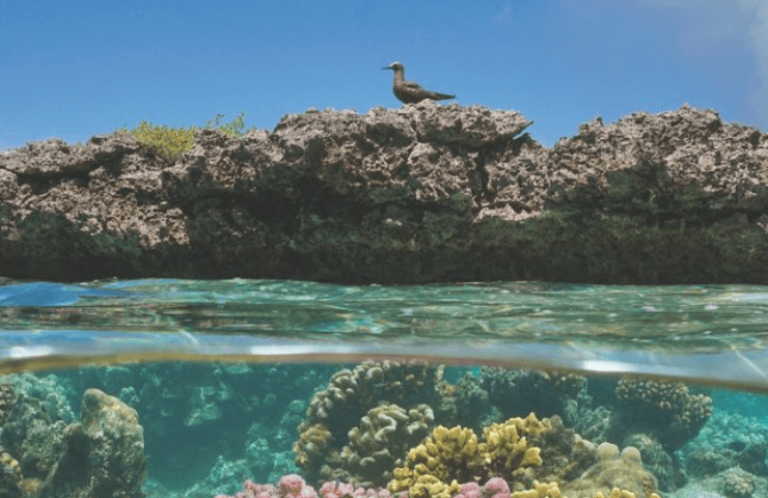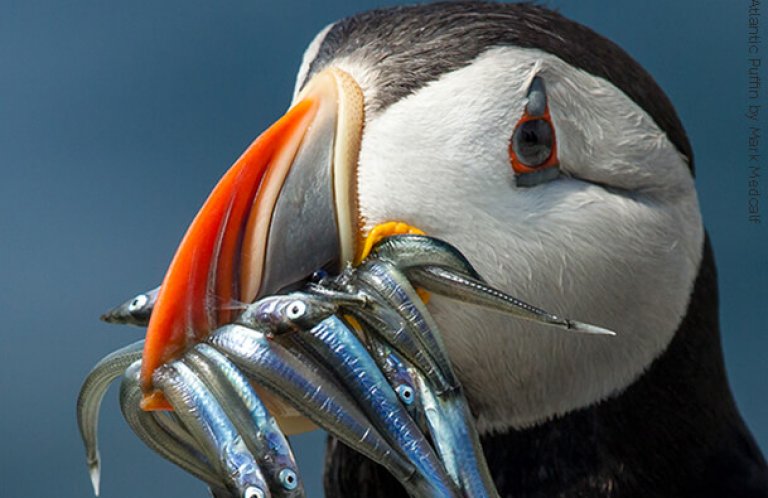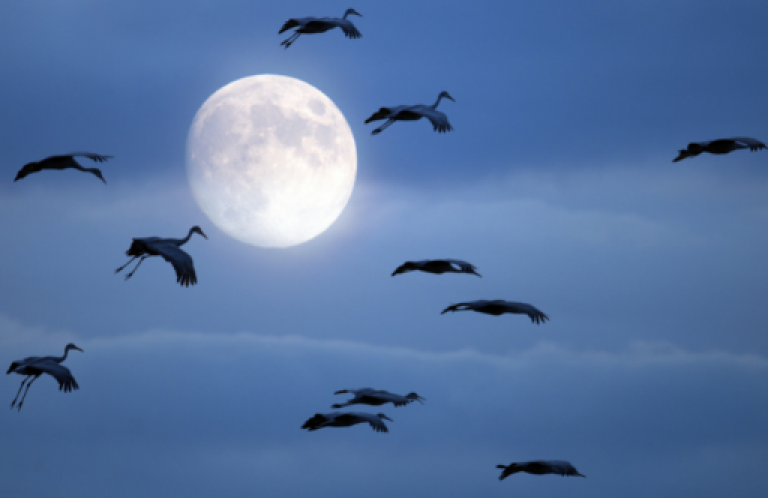How Are Seabirds Impacted by Ocean Plastic, and What Can You Do to Help?

As the use of plastic has grown throughout the 20th and 21st centuries, so too has the ubiquity of plastic waste in the world's oceans. Of all the world's birdlife, seabirds such as albatrosses, gannets, and gulls are hit especially hard by this threat. As we enter beach season, the American Bird Conservancy Action Fund (ABC Action Fund) offers important insights into the amount of plastic in our oceans, why this plastic is harmful to seabirds, and what can be done to address this threat.
What are plastics?
Human-made plastics were invented in the 19th century. The first plastic was derived from plant cellulose, but today most plastics are made from chemicals derived from oil and gas. At the molecular level, long-chain polymer molecules containing repeating subunits make up plastics. This molecular composition allows plastics to be easily shaped under heat or pressure.
Why are plastics so widely used?
World War II was a major catalyst for driving plastics innovation and usage. During the war, plastics production quadrupled. Post-war, manufacturers shifted from making military items to consumer goods. Today, plastics are cheap to produce and offer lightweight durability. Thanks to their malleability, everything from food packing to car parts is created from plastic. Other materials like wood, glass, and wool have been replaced in many cases by plastic to make items, such as chairs, cups, and sweaters.
How much plastic is in the ocean?
In 2010, scientists estimated that between 4.8 to 12.7 million metric tons (MT) of plastic waste entered the ocean that year. Averaging this calculation and converting it to pounds, that's a staggering 17.6 billion pounds of plastic ending up in the ocean each year. In 2016, scientists estimated that about 11 million MT, or 24.3 billion pounds, of plastic went into the ocean. The same study predicted that by 2040, plastic waste in the ocean will nearly triple. Another study found that plastic in the ocean will outweigh fish by 2050. While it remains to be seen if plastic will overtake fish by weight, there is without a doubt an alarming amount of plastic in the ocean.
What makes plastics harmful to seabirds and other marine life?
Durability helped plastics rise in popularity, but it is also what makes plastics an environmental nightmare. Depending on the type of plastic, it can take items 10 to over 500 years to biodegrade in a marine environment. While biodegrading, plastics break down into smaller pieces, creating microplastics, plastic particles less than 5 mm in diameter. Seabirds consume microplastics, mistaking them for food — scientists estimate that 90 percent of seabirds have ingested plastic. “Plasticosis,” a sometimes lethal disease caused by the ingestion of plastics, is documented causing digestive and growth problems in Flesh-footed Shearwater. Entanglement with consumer products like single-use plastic bags and fishing lines is another danger plastics pose to seabirds and marine life.
How can seabirds be protected from plastic?
Education, reducing plastic usage, clean-up efforts like American Bird Conservancy's (ABC's) SPLASh program on the Gulf Coast, and effective policy solutions are all crucial for protecting seabirds. Fortunately, ABC and the ABC Action Fund are working together to protect seabirds before this crisis gets worse. To learn more about our efforts to protect seabirds, visit ABC's plastics page, Marine Program social media (@ABCmarine), or the Action Fund website for legislative insights.
This blog was originally published by the ABC Action Fund and developed in conjunction with a seabirds and plastics factsheet, available on the ABC Action Fund Resource page.


















































